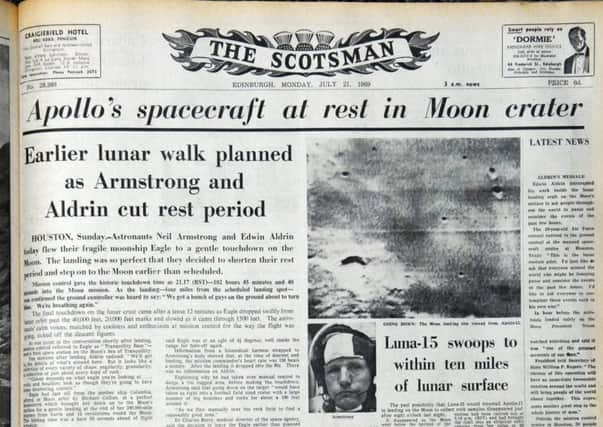From David Livingstone to the Moon Landing - 200 years of exploration as reported by The Scotsman


The archive isn’t just Tardis-like because it’s deceptively large on the inside, either – strange things seem to happen to time in there as well. You might think you’ve just run downstairs for five minutes to check on something, but wait – what’s that story on the page next to the one you were looking for? And before you know it, half an hour has vanished.
In seven years of writing this column, I’ve had cause to spend many hours in The Scotsman stack, hunting for original reports on some of the great acts of exploration, and I’ve now accumulated quite a collection of blurry photocopies, from David Livingstone’s epic crossing of the African continent from 1854-1856 to the 1969 Moon Landing and beyond. And as The Scotsman celebrates its 200th birthday on Wednesday, now seems like as good a time as any to share some of my choicest finds.
Advertisement
Hide AdAdvertisement
Hide AdPerhaps the most obvious place to start is with Livingstone; he is, after all, Scotland’s greatest ever explorer. There is a monumentally long leader column from 24 December 1856, singing his praises in fantastically ornate prose, that is perhaps The Scotsman’s definitive statement on his exploits, but my favourite bit of contemporary Livingstone coverage dates from 17 December of the same year, when readers were treated to a first-hand report of his arrival in Southampton. The unnamed journalist noted that Livingstone’s “face is furrowed through hardships and is almost black with exposure to a burning sun” and also that, because “he has scarcely spoken the English language for the last 16 years... he hesitates in speaking... is at a loss sometimes for a word, and the words of his sentences are occasionally inverted...” The best bit, though, is this: “He saw a multitude of tribes of Africans and several races, many of whom had never seen a white man until he visited them. They all had a religion, believed in existence after death, worshipped idols and performed religious ceremonies in groves and woods.” What a wonderful reminder that, well within the lifetime of this newspaper, there were still vast swathes of the world map that remained entirely blank to us, their inhabitants an unknown quantity. And how strange and somehow moving that, even in a short news report, this evidence of an apparently universal human need to believe in the hereafter should be seen as central to the story.
Fast-forward half a century or so, and Polar exploration was the next big thing; no new tribes to discover, but still plenty of blank spaces to fill in. On 11 February 1913, The Scotsman announced the fate of Robert Falcon Scott with the headline: “Antarctic Disaster – Captain Scott and Four Companions Perish.” Oddly, under a hand-drawn map of the routes taken to the South Pole by Scott and Amundsen, the first line of the report reads: “At this late date in the annals of Polar exploration, the Antarctic has claimed its Franklin.” These days, of course, Scott is far better known than Sir John Franklin, who disappeared in the mid-19th century while searching for the Northwest Passage, but clearly in 1913 it was felt that this comparison was the best way to contextualise his fate. (And speaking of Franklin, on 4 October 1848, with searches still ongoing, The Scotsman remained cautiously optimistic: “Assuming that Franklin did reach the opposite side of this open [Arctic] Sea, what more probable than that he is entangled in some remote portion of it?”)
Often, the more telling references to explorers appear, not in attention-grabbing front page news stories or editorials, but tucked away in less glamorous corners of the paper. On 27 May 1911, for example, The Scotsman carried a letter from John Mathieson, a member of William Speirs Bruce’s Scottish Antarctic Expedition of 1902-4, appealing for funds from the Government and the general public to allow “publication of the scientific research of this expedition... without delay”. Bruce’s considerable achievements were never properly recognised during his lifetime, partly because he struggled to adequately fund the publication of his findings, and it is only in recent years that he has started to receive the credit he deserved.
Should the editor of the day, John Pettigrew Croal, have made more of this letter? Turned the neglect of Speirs Bruce into front page news? Campaigned to have his findings published? Perhaps, but it’s easy to be wise a century after the event. And let’s not forget that newspapers can only ever be a first draft of history – even when that first draft fills a room the size of a tennis court. n